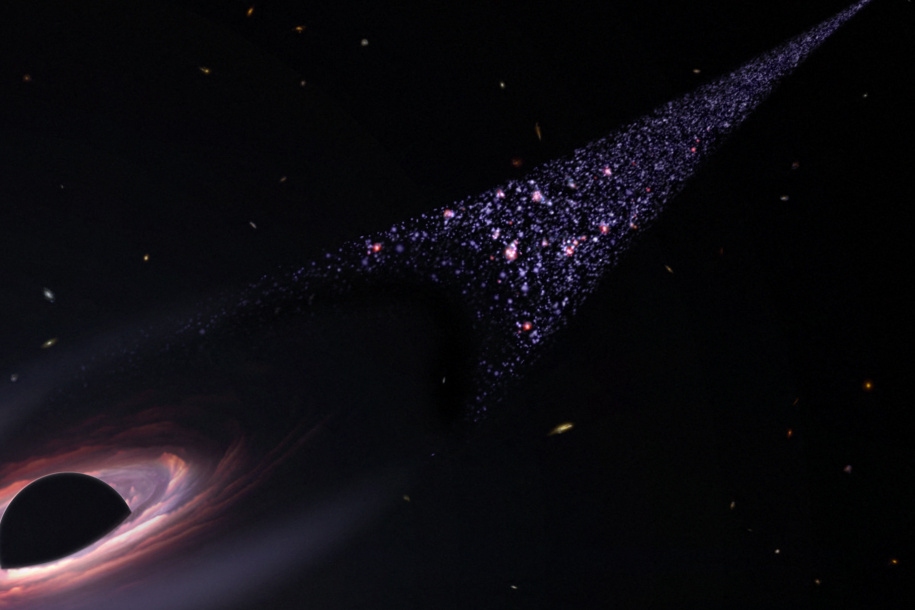(Los Angeles) A “supermassive” black hole is tearing through space at full speed and leaving behind a trail of stars 200,000 light-years long, according to a groundbreaking discovery announced by NASA.
This enormous monster, whose mass is equivalent to 20 million times that of our sun, is unleashed in the interstellar vacuum and collides with the gas clouds which are on its way.
Given the outsized forces at play, this gas then turns into a trail of stars, which were spotted by NASA’s Hubble Space Telescope.
“We think we see a wake behind the black hole where the gas cools and can form stars,” Yale University scientist Pieter van Dokkum said in a statement. “What we see are the after-effects. Like the wake of a ship, we see the wake of the black hole. »
The researchers believe the gas is likely warmed by the collision with the black hole, then cools after it passes, giving rise to the stars seen in its path.
“The gas in front of it is hit by the supersonic, very high-velocity impact of the black hole,” van Dokkum said.
Scientists believe that the celestial beast came from a colossal interstellar threesome.
According to their theory, two galaxies probably merged around 50 million years ago, causing two supermassive black holes to orbit each other.
Discovered by accident
But a third galaxy, with its own black hole, would then have collided with this set. Enough to create an unstable and chaotic trio, which ended up ejecting one of the black holes at a phenomenal speed: the monster spotted by Hubble could cover the distance between the Earth and the Moon in just 14 minutes.
For us, poor humans, there is no risk of being swallowed by this huge celestial object, according to the researchers responsible for this discovery. All of this happened way out in space and a long time ago, when the universe was half its current age.
We see this phenomenon today, because the light took such a long time to reach us.
This discovery was made by accident, according to Mr. van Dokkum.
Using the Hubble telescope, the scientist “noticed […] a little trail” of stars, “quite amazing, very, very bright and very unusual”. “It was unlike anything we had seen before. »
Never observed before, this kind of black hole may not be alone in the universe, according to NASA.
The new Nancy Grace Roman Telescope, slated for launch this decade, should provide a much wider view of space, and may spot more star trails signaling the presence of one of these colossi.
